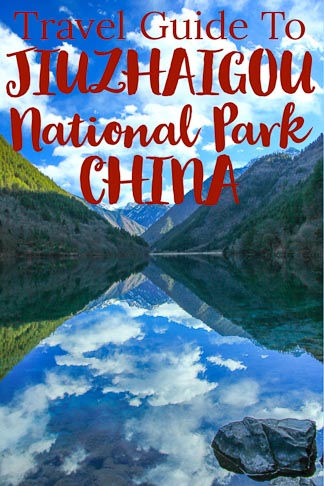Nestled in the mountainous region of southwest China is one of the country’s hidden gems and most beautiful national park – Jiuzhaigou National Park.
This is a picturesque fairyland, away from the hustle and bustle of the major tourist cities, like Beijing and Shanghai.
Here in the northern part of Sichuan, immerse yourself in the tranquillity of nature.
Take in the charming scenery of colorful forests and lakes, magnificent waterfalls, and tall, snow-capped mountains.
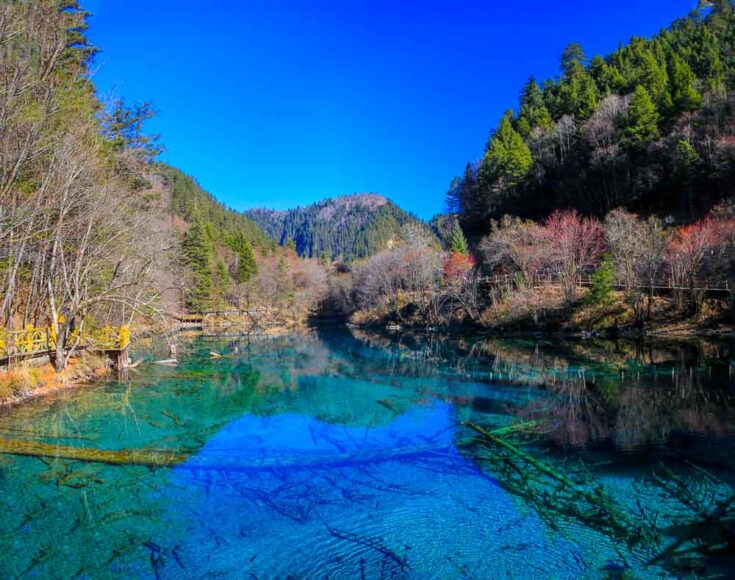
While Jiuzhaigou is a must for lovers of the outdoors, getting there can be tricky.
In fact, it can only be reached from the Sichuan Province´s capital, Chengdu – home of the giant panda.
To ensure you have the most pleasant experience throughout your journey, we have put together the ultimate travel guide to Jiuzhaigou National Park.
Jiuzhaigou National Park – All you Need to Know
Jiuzhai Valley, locally known as Jiuzhaigou (Chinese for “Nine Village Valley”), is located in the Min Shen mountain range in Sichuan.
You’ll find yourself in a network of valleys fabled for its vivid, blue-green lakes, stunning waterfalls, unique landforms, and even giant pandas. This place is like a real-life fairytale.
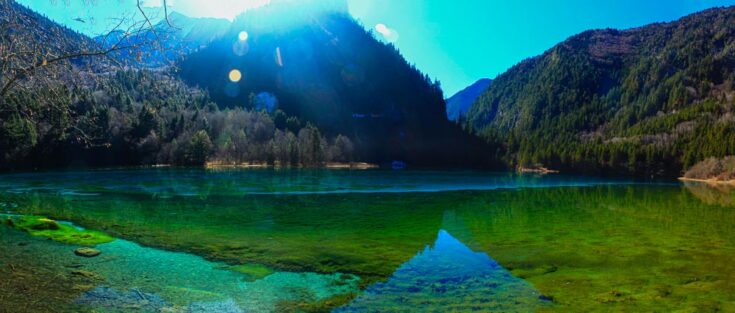
Below we have detailed all you need to know – from when to visit, where to stay, what to see, and more.
This area was unknown to people outside the valley until 1975 when the area was heavily logged until the Chinese government turned it into a national park in 1982 and officially opened Jiuzhaigou National Park for tourist in 1985 and the park was added to UNESCO World Heritage list in 1992.
Best Time to Visit Jiuzhaigou China
Jiuzhaigou is renowned for having four distinct seasons. Each season the valleys boast something new.
Snow and icy lakes in winter, flowers in spring, greenery in the summer, and colorful leaves during autumn.

To many, the best time to visit Jiuzhaigou is during autumn, as the mountains and valleys boast a splendid autumn palette.
The great vistas of yellow, orange, reds, and greens beautifully contrast against the valley’s turquoise lakes. You will experience warm days and cold nights.
Note that the difference in temperature is large, dropping from 18ºC (64ºF) to below 8ºC (46ºF) – so be sure to pack accordingly.
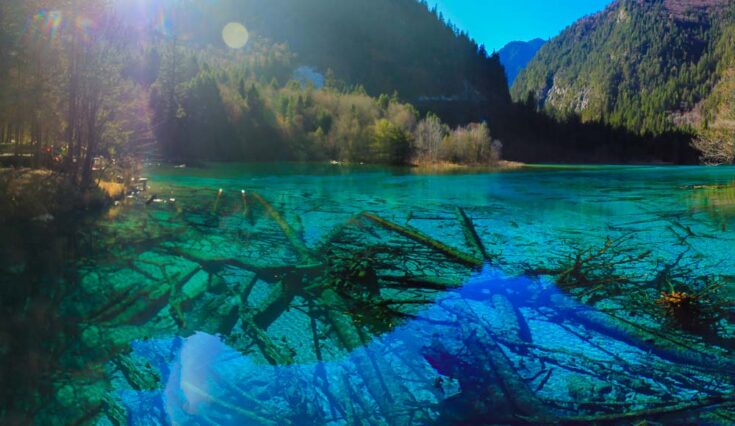
Jiuzhaigou also presents stunning scenery in spring, summer, and winter. In the spring, expect to see verdant mountains, as the winter snow begins to melt.
If you’re hoping for a less crowded trip, this is a great time to visit.
As summer approaches, so does the peak season. While the crowds are larger during this time, the scenery is more than worthwhile, as the forests turn greener and dots of flowers begin to bloom.
During winter, Jiuzhaigou valley turns into a winter wonderland. Everything is covered in snow, and even the waterfalls completely freeze.
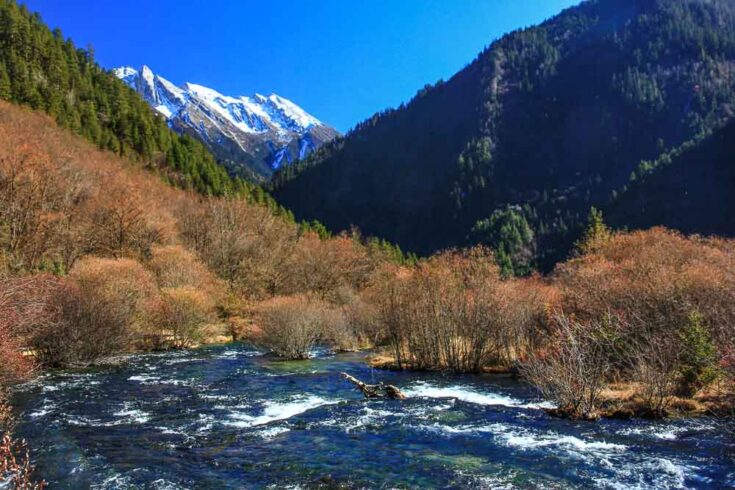
How to Get to China’s Jiuzhaigou National Park
Jiuzhaigou lies tucked away between mountains and is isolated from other cities in the Sichuan province.
The capital city of Chengdu serves as a gateway to Jiuzhaigou. From this city, visitors can reach the valley by plane or by bus.
Flying to Jiuzhaigou
The easiest way to get to Jiuzhaigou National Park is by taking a flight from Jiuzhai Huanglong Airport. The flight from Chengdu to Jiuzhaigou is around 2 hours.
Flight arrangements vary according to the travel season. During peak season (April to October), around four flights travel between Chengdu and the Jiuzhai Huanglong Airport a day.
During the low season (November to March), there may only be one or two flights.
Once you’ve arrived at Jiuzhaigou airport, take a bus or rent a car and head toward the valley.
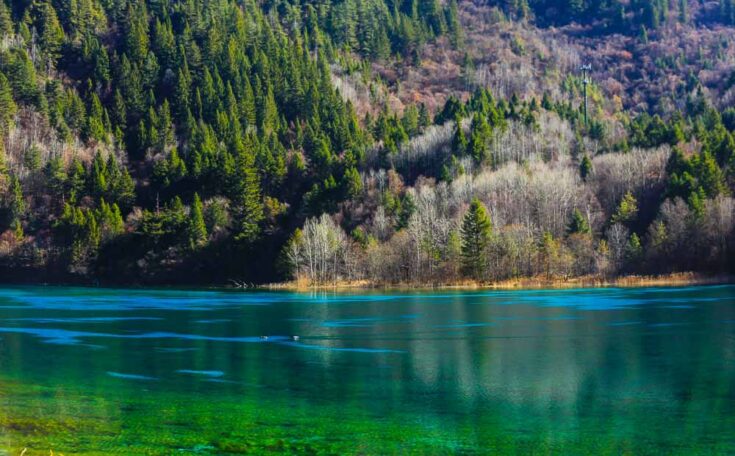
Note that there are no direct international flights going to Jiuzhaigou and the only direct domestic flight from an international airport in China is from Beijing, Chengdu, Chongqing, Shanghai, Xi’an and Hangzhou
But be aware that the airport is located 1,5hour drive from the park itself.
Chengdu to Jiuzhaigou by Bus
Travelling from Chengdu to Jiuzhaigou by bus takes around 8 to 10 hours to complete the 460km long journey.
There are two buses from which you can choose from – Chadianzi Bus Station and Xinnanmen Bus Station.
Be aware that the bus journey from Chengdu to Jiuzhaigou has for years been notorious as one of the most uncomfortable and long trips in the whole of China, but the road has over the recent years been improved and travel time have now been decreased
Buses from Xinnanmen are generally more modern than those from Chandianzi. On your journey, take in the natural scenery, enjoying views of the valley and snow-capped mountains in the distance.
Prices for a bus ticket from Xinnanmen costs around 158 Yuan ($25 USD). Tickets from Chadianzi are about 157 Yuan ($24 USD).
Most hostels in Chengdu can help you with arranging a trip to Jiuzhaigou with a private driver or help you with booking the bus ticket.
There are also direct busses from Xian and Chongqing. But less frequent
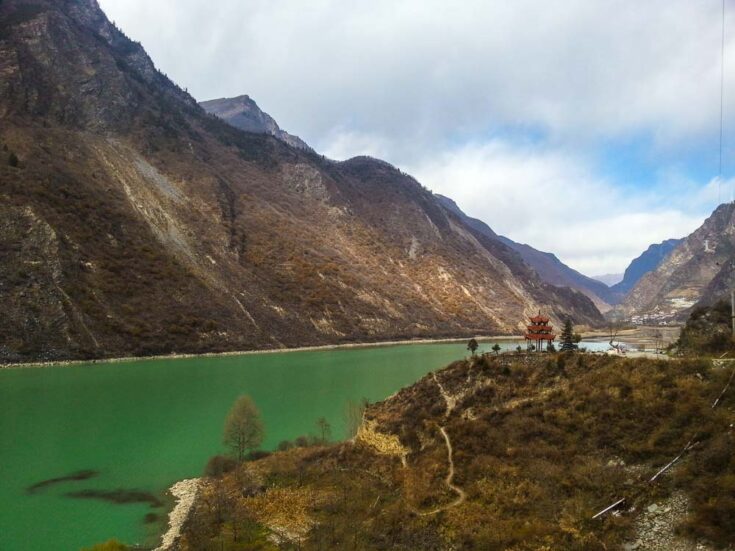
Where to Stay in Jiuzhaigou Valley, China
When taking a bus or taxi toward Jiuzhaigou, check with the station staff to ensure that your bus stops at Jiuzhaigou valley, and not the county. Jiuzhaigou County is around an hour from the valley.
There is no accommodation within the scenic area, however, near the entrance of Jiuzhaigou Valley, there is a business area with many hotels and restaurants.
Below are a few accommodation options to ensure you have a comfortable stay.
Camping inside the national park is strictly forbidden.
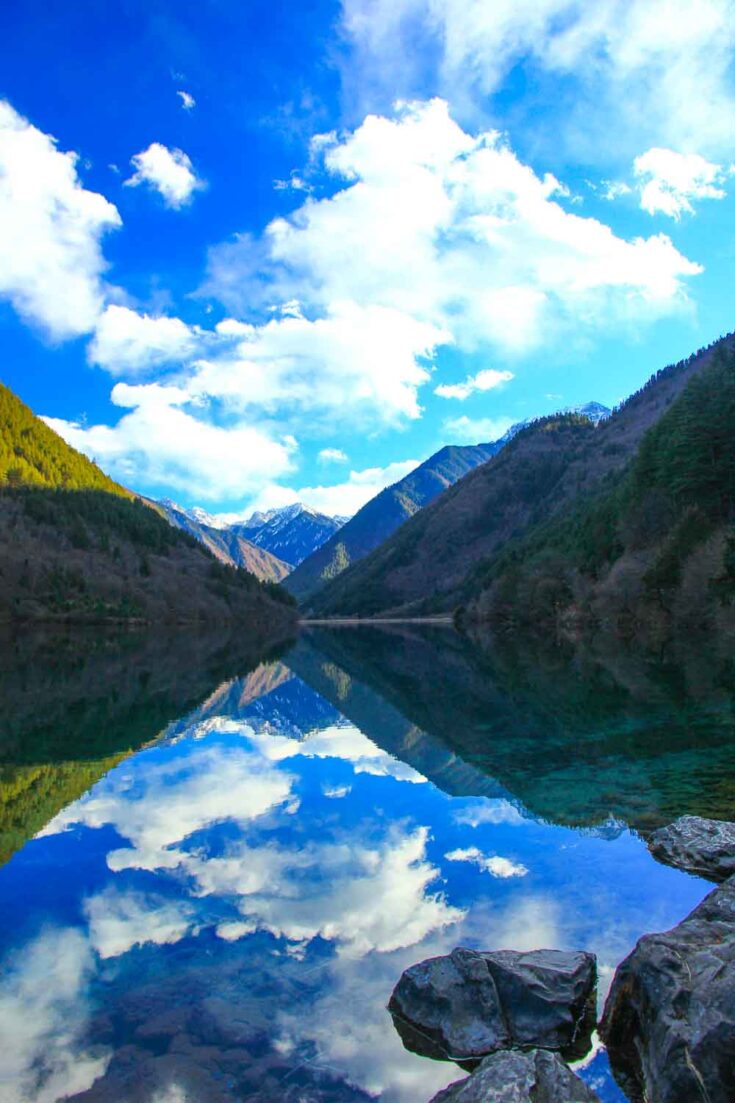
Hilton Jiuzhaigou Resort
The Hilton Jiuzhaigou Resort is a 5-star resort getaway in Sichuan. It is comfortably nestled in the hillside of the Min Mountains and is a mere 12 km (20 minutes) from the National Park.
In addition to its scenic surroundings, the resort boasts a beautiful design inspired by a fusion of modern and Tibetan architecture.
Hilton Jiuzhaigou Resort offers a wide selection of accommodation options, from standard guest rooms to deluxe suites and villas.
There are also two on-site restaurants where you can enjoy some Chinese and western cuisines. The resort also has a children’s park and children’s club, so it’s great for families with kids.
Holiday Inn Express Jiuzhaigou, an IHG Hotel
If proximity to Jiuzhaigou National Park is your number one priority, then the Holiday Inn Express is a great option.
This simple, but lovely accommodation is just 1 km from the valley, and provides a comfortable spot to come back to after a day of exploring.
To start your day, dig into the hotel’s “Express Start Breakfast”, comprising Chinese and western favorites.
In addition to the National Park, it is also close to Zharu Temple and the Romantic Show of Jiuzhai.
More Accommodation Options Near Jiuzhaigou Valley
Listed below are several more lovely accommodation options in and around the Jiuzhaigou Valley area:
- Jiuzhaigou Leisure Inn
- Sanroyal International Hotel
- Dazangfeng Hotel
- Soluxe Hotel
- Jiahe Hotel
There’s also many local guesthouses, hostels and hotel at the entrance at the park (non with online booking), together with many local smaller restaurants, bars and shops
Jiuzhaigou Valley National Park
Jiuzhaigou National Park is located in southwestern China in the northern part of Sichuan. This dream-like destination is an extravaganza of natural wonders and is a recognized UNESCO Heritage Site and World Biosphere Reserve.
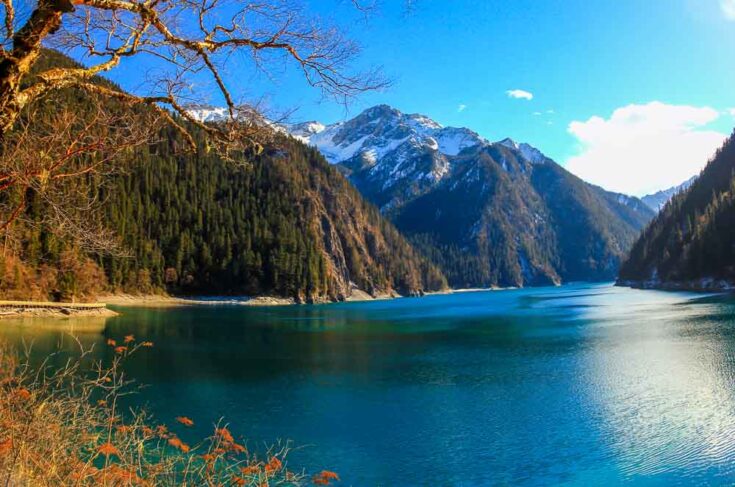
In total, Jiuzhaigou National Park covers an area of 720 square kilometers.
Nestled in the Min Mountains, the park is renowned for its breathtaking scenery with some of the most beautiful lakes in the world.
While visiting, you will be exposed to colorful lakes, layered waterfalls, snow-capped mountains, and plenty more.
For anyone visiting Jiuzhaigou, a visit to this unspoiled landscape is a must, as it is sure to have you lost for words.
What to See at Jiuzhaigou National Park
Given the sheer size of Jiuzhaigou National Park, the views it offers are endless. So that you know what to look out for during your visit, here are some of the park’s most popular attractions.
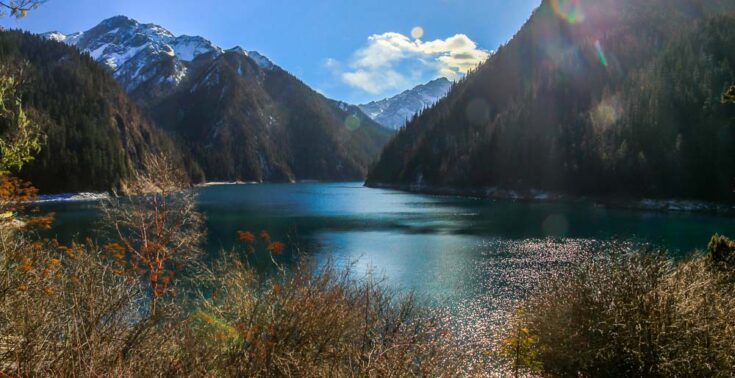
Colorful Forests
Jiuzhaigou National Park is covered by 200,000 hectares of forest and is well-isolated from the hustle and bustle of the cities. Even tho the park can get very busy during high season.
What’s truly remarkable about this forest is the various looks it shows from season to season.
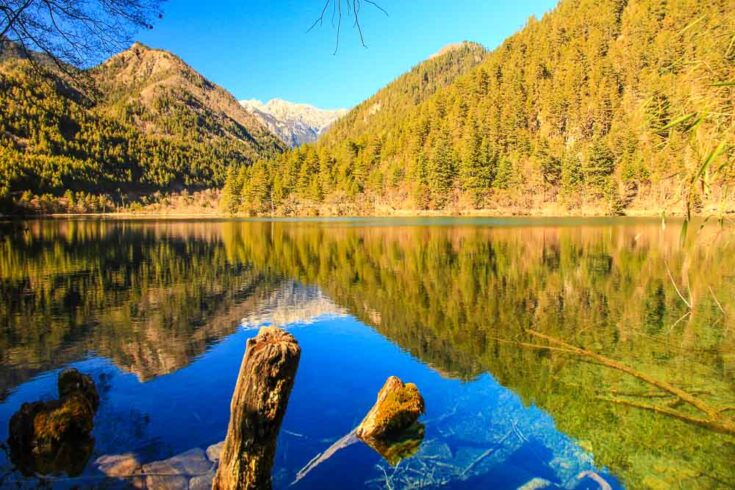
In the autumn, the forest boasts a splendid array of yellow, orange, red, and gold.
The spread of dark and light colors splashed across the mountain and valleys during this time gives off the impression of an oil painting.
As spring and summer approaches, watch as the forests transform, presenting lovely shades of green.
Stunning Waterfalls
Jiuzhaigou is home to some of the most stunning waterfalls in Sichuan and all of chINA. Some must-see waterfalls in Nuorilang Waterfall, Shuzheng Waterfall, and Pearl Shoal Waterfall.
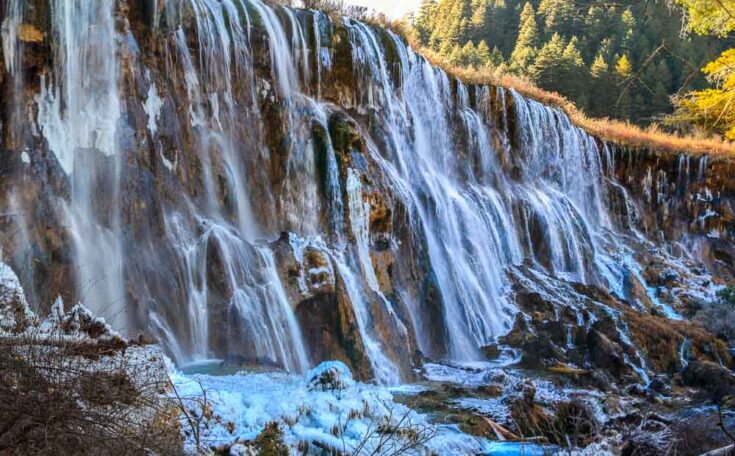
Nuorilang, in the Tibetan language, means grand and magnificent – fitting given this waterfall’s size. Nuorilang Waterfall is the widest waterfall in China.
It measures 270 meters in width, and covers an altitude of 2,365 meters. It is also one of the most popular attractions, attracting visitors from home and abroad.
Pearl Shoal Waterfall may be the park’s most beautiful waterfall, and sits surrounded by tall, green pine trees. Much like Nuorilang Waterfall, it is fairly wide.
A unique feature of this waterfall is its shoal face. When water flows over the shoal face, it reflects the bright sunshine, much like pearls do – hence its name.
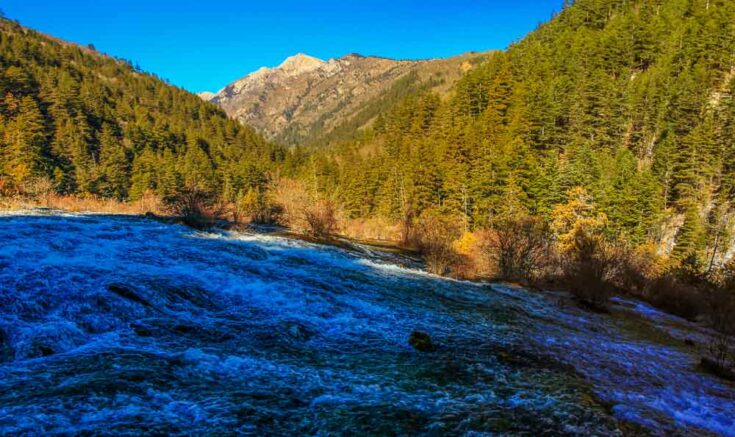
Shuzheng Waterfall is a smaller waterfall located between the Tiger and Wolong Lakes in Muni Valley. It measures around 62 meters wide and features a 15-meter drop.
Despite its size, it is one of the most deafening and ferocious waterfalls. The sound echoes through the valley, similar to how the roar of a tiger or lion would.
Green Lakes
Jiuzhaigou National Park is home to some of the most enchanting bodies of water in the world. The lakes here are crystal clear and green all year round – which beautifully reflects the scenic surroundings.
As the seasons change, the lakes take on different hues and tones. Presenting shades of yellow, green, magenta, and brown, these lakes are like a multicolored brocade.
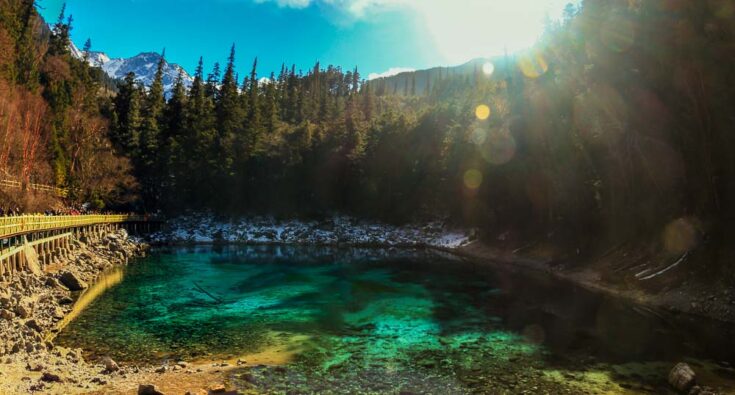
The most famous lake in Jiuzhaigou National Park is Five Flower Lake, also known as Wuhae Lake. It is a shallow, multi-colored lake whose bottom is covered with ancient fallen tree trunks.
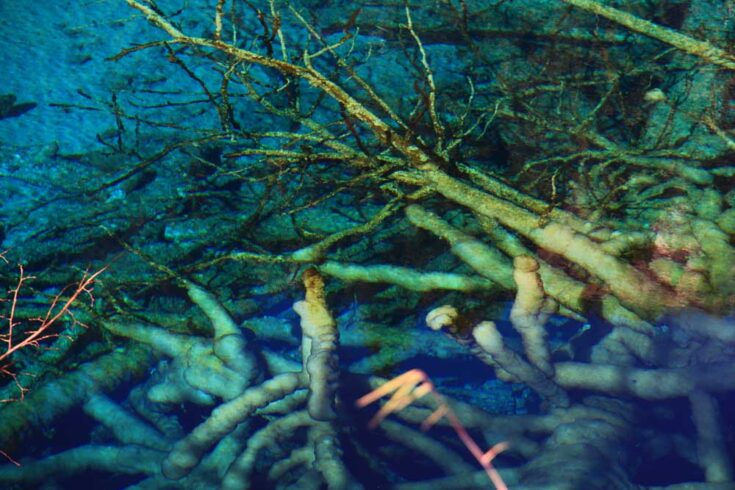
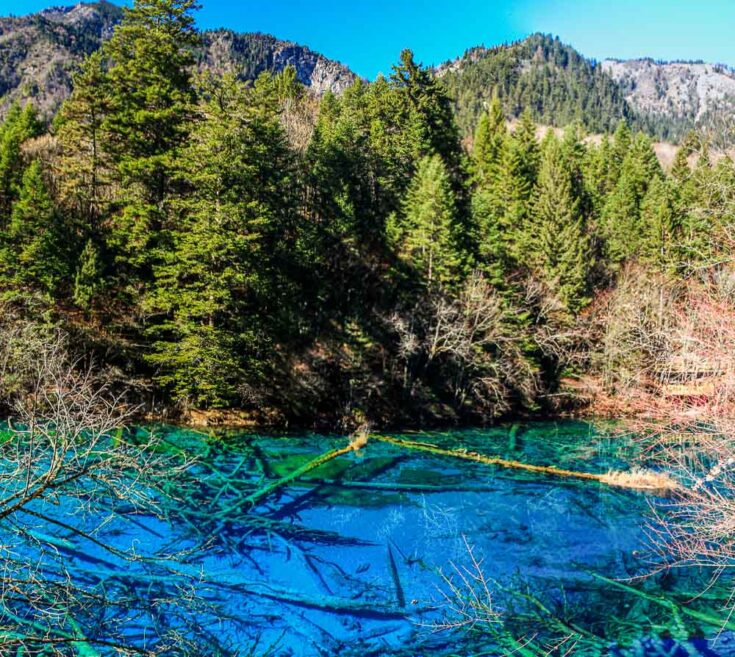
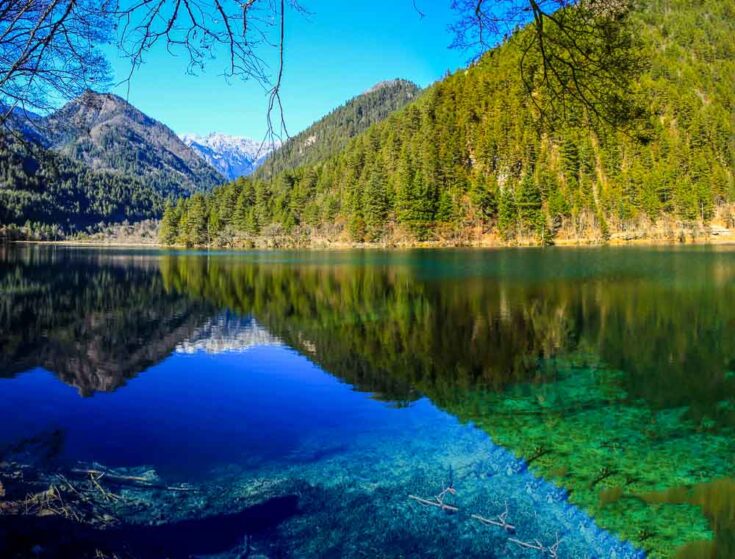
Other popular lakes found in the park include Panda Lake, Mirror Lake, and Reed Lake.
There is also the Five Color Pond, the smallest lake in Jiuzhaigou. While it is small, it has a richly colored underwater landscape and some of the clearest waters in the area.
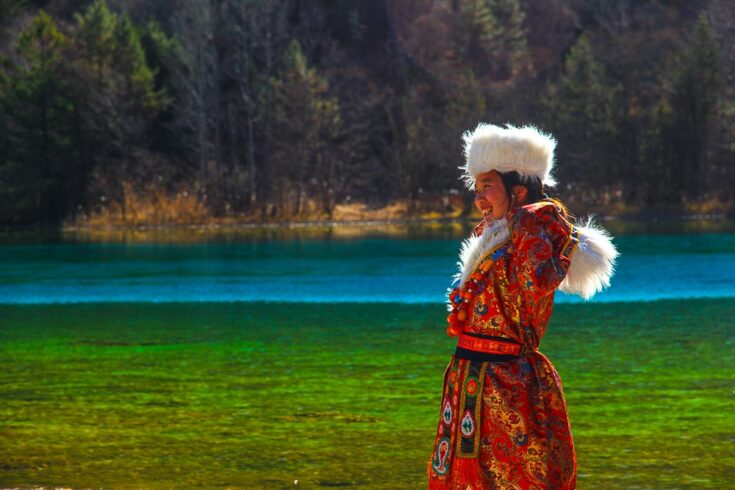
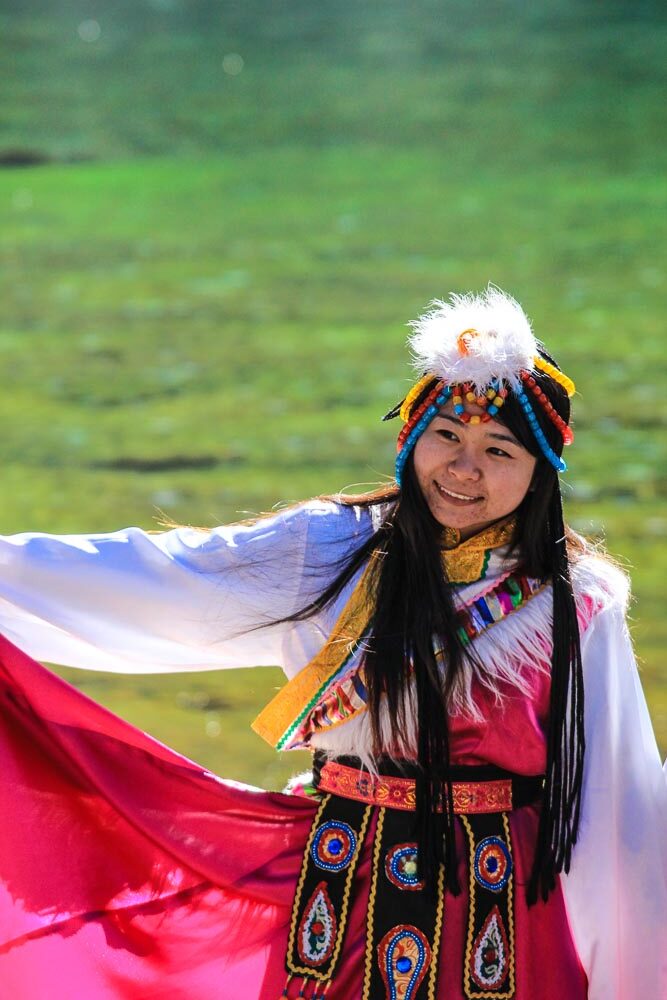
Blue Ice & Snow-capped Mountains
During the cold winter months, the many flowing waterfalls found throughout the park begin to freeze and solidify. This results in a beautiful display of ice curtains, ice sheets, and ice balls.
What’s truly unique about this phenomenon is the way in which the light transforms the ice into a transparent blue. This spectical is rare and only occurs for a dozen days a year, between late January and early February.
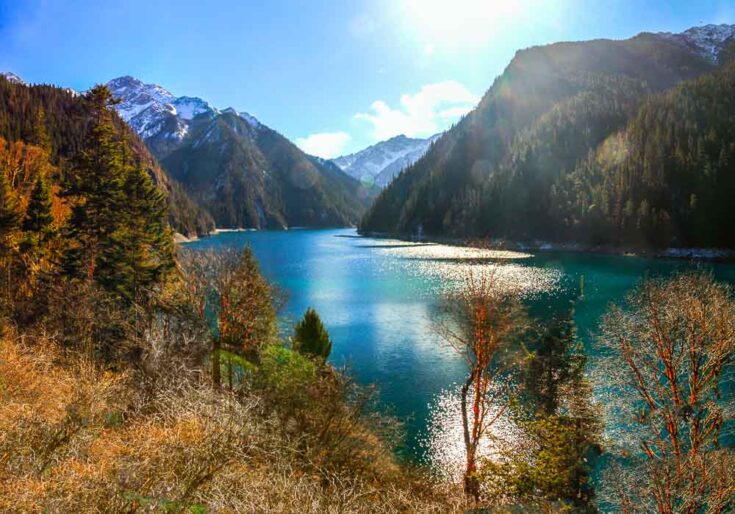
To accompany the stunning series of blue ice sculptures found throughout the park, there is also plenty of snow covering the valley.
What Jiuzhaigou is well-renowned for, however, is its snow-capped peaks which silently guard this dream-like valley.
Entrance fee to Jiuzhaigou National Park
Visiting Jiuzhaigou National Park is far from cheap.
The Ticket Office is open 07.00 am until 17.00 daily.
High Season – 220 RMB (April 1 – November 15)
Low Season – 80 RMB (November 16 – March 31)
During Low season you can buy a second-day ticket for an additional 20RMB, but you will have to buy it together with the first-day ticket, and a photo of you will be taken so you don’t share your ticket with someone else.
It´s also compulsory to get a bus ticket costs ¥90. There´s no way to enter without a bus ticket.
And with it being over 30 km from the entrance to the top of the park, and with no personal transport, not even bicycles, are permitted within the park. This is extremely strict enforced.
Tibetan Villages in Jiuzhaigou
The name Jiuzhaigou comes from Tibetan meaning the “Nine Settlement Valley/Nine Villages Valley” after the 9 Tibetan villages located throughout the valley.
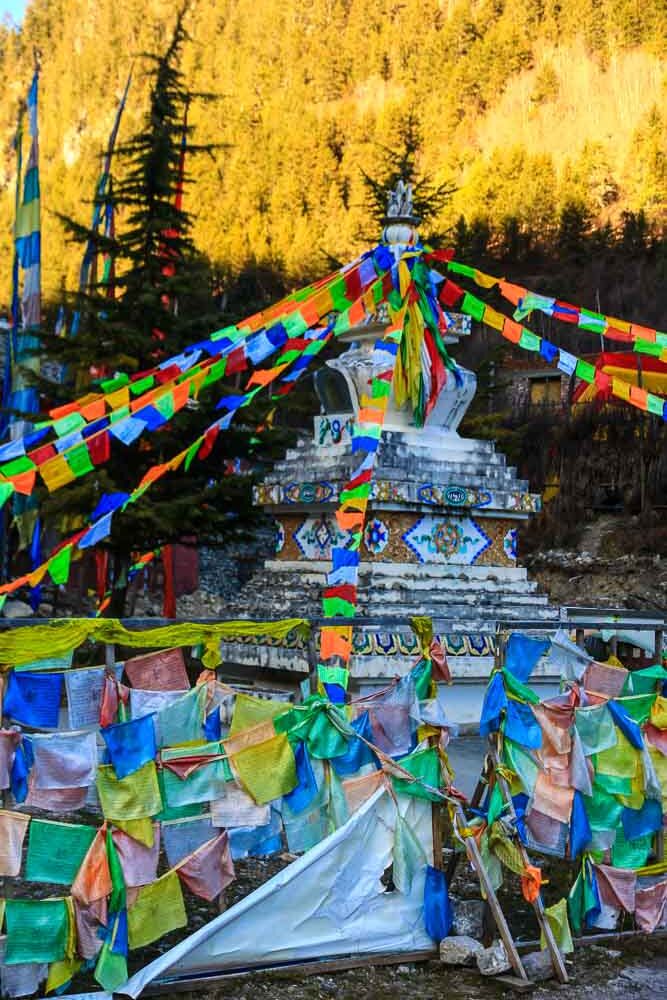
While today only 7 of the 9 Tibetan villages in the area are still populated today, and since the area now is protected and agriculture is no longer permitted, so the local villages now rely on tourism with their traditional Tibetan homes selling traditional food and “Yak Butter tea“.
The steep main street is lined with shops selling trinkets, Tibetan artefacts and souvenirs.
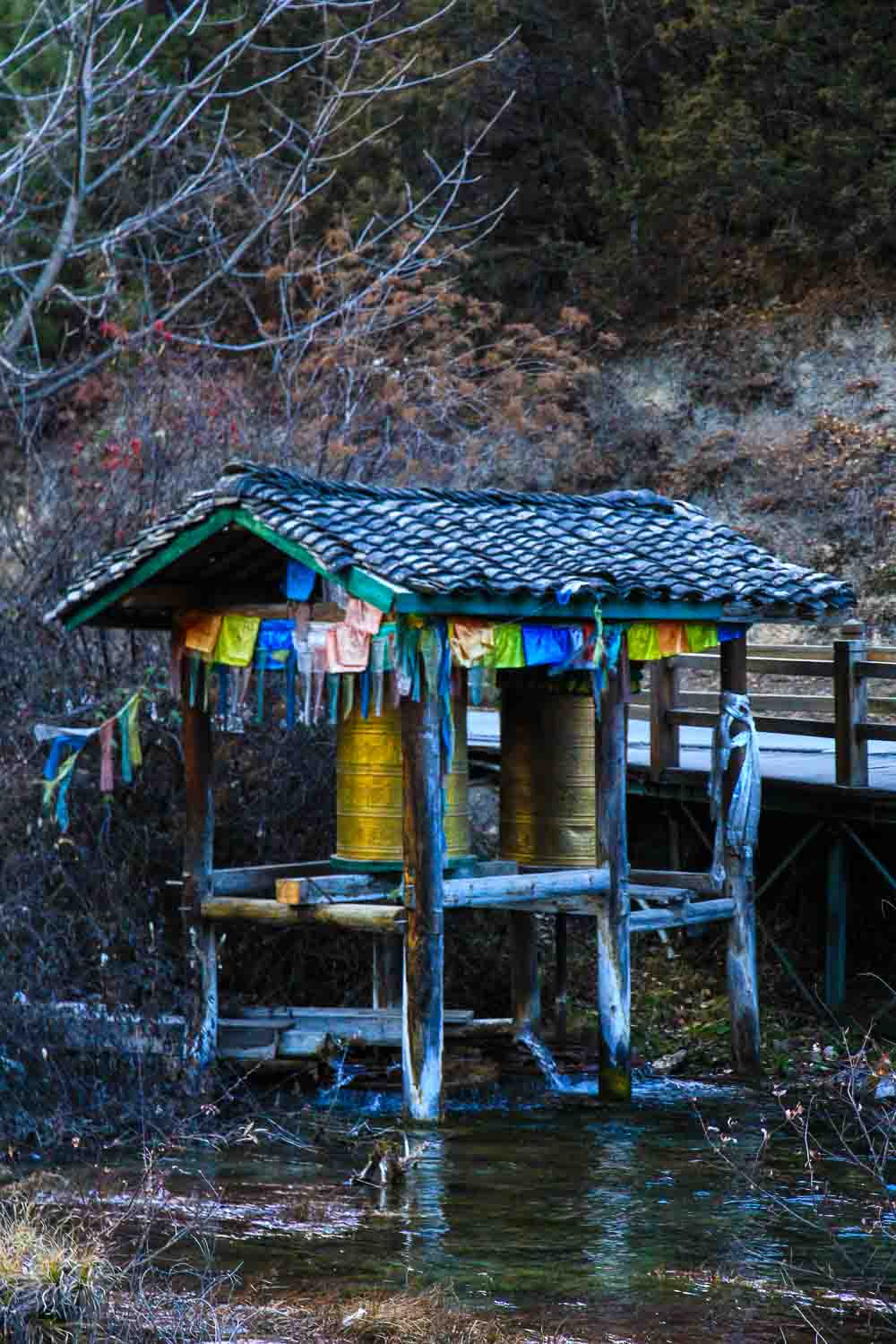
Plan your Jiuzhaigou Travels – A Fairyland Awaits You
Visiting Jiuzhaigou National Park provides a unique off-the-beaten-path adventure in a destination that can barely be described with words alone.
To truly experience all that the valley has to offer, from its colourful forests and lakes to its snow-capped mountain peaks, you will need to see it for yourself.

When planning your western Sichuan travels, be sure to include this dream-like destination in your itinerary. It is a once-in-a-lifetime adventure and one that you will never forget.
